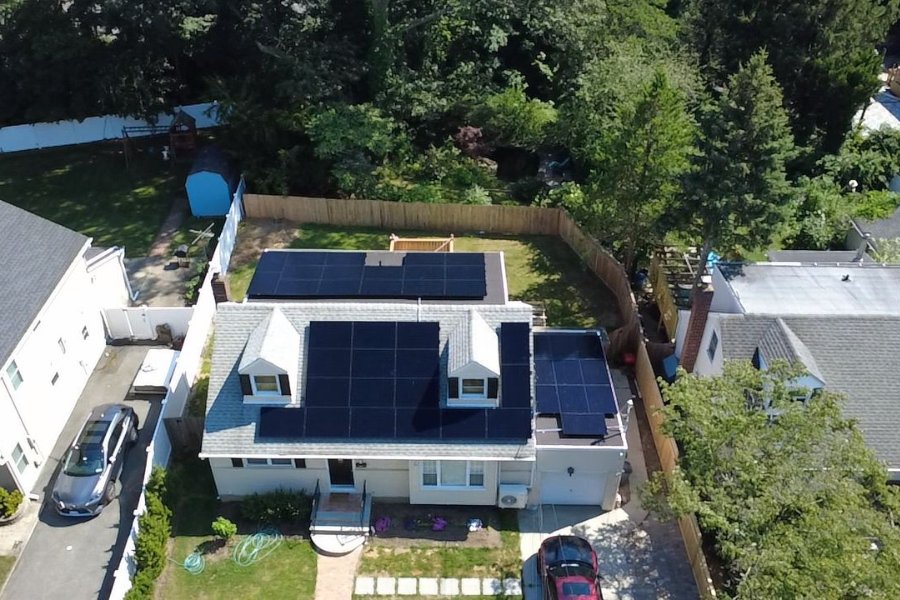You’ve probably seen the term “PPA” pop up while researching solar options for your home or business. It stands for Power Purchase Agreement, and it’s one of the most common ways people purchase solar panels without buying them outright. If you’re trying to figure out whether this model makes sense for you, it helps to understand exactly how it works and what it means.
How does it work?
A PPA is a contract between you and a reputable solar provider. The provider installs, owns, and maintains the solar panels on your property. You don’t pay for the equipment or the installation. Instead, you agree to buy the electricity those panels generate at a predetermined rate, usually lower than what your local utility charges.
When you sign a PPA, the solar company handles everything: design, permitting, installation, and ongoing system monitoring. Once the panels are up and running, they start producing electricity. That power flows directly into your home or business first. If you use more than the system produces, you pull the rest from the grid like normal. If you produce more than you need, the excess typically goes back to the grid, and depending on your state’s net metering rules, you might get bill credits for it.
Payments
Your monthly payment under a PPA is based on how much energy the system produces and the agreed-upon rate per kilowatt-hour (kWh). That rate is often fixed or includes a small, predictable annual increase – far less than the historical rise in utility rates. Over time, that difference adds up. And because the provider owns the system, they’re responsible for keeping it in good shape. If something breaks or performance dips, it’s on them to fix it.
How is it different from a lease?
People sometimes mix up PPAs with solar leases, but there’s a key distinction. With a lease, you pay a fixed monthly fee regardless of how much energy the system makes. With a PPA, you only pay for the actual electricity you use from the panels. That means your bill can vary slightly month to month based on production and usage, but it also aligns your cost more closely with real energy value.
Both options avoid upfront costs, but a PPA tends to offer more direct savings because you’re paying for a commodity (electricity) at a discounted rate, not renting equipment. It’s a small difference, but it matters when you’re comparing the value long-term.

Who benefits most from a PPA?
Homeowners and businesses with strong, unshaded roofs and consistent electricity usage tend to get the most out of a PPA. You don’t need excellent credit, but most providers do run a basic check to confirm you can reliably pay your bills. The agreement usually lasts 20 to 25 years.
It’s also worth noting that because the company owns the system, they claim the federal tax credits and other incentives. That’s why they can afford to install it for free. You don’t get those tax benefits directly, but they’re baked into the lower electricity rate you pay. For most people, that trade-off makes sense, especially if they wouldn’t be able to use the tax credit anyway for any reason.
What happens at the end of a PPA?
When the term ends, usually after two decades or more, you typically have three choices.
- You can renew the agreement, often at a new negotiated rate.
- You can buy the system outright at fair market value, which by then is usually quite low since the panels have depreciated.
- Or you can ask the provider to remove the system at no cost to you. Most contracts spell this out clearly upfront.

Is a PPA right for you?
A PPA isn’t the only path to solar, but it’s a smart fit for people who want immediate savings without the complexity of ownership. You don’t manage maintenance or deal with warranties or inverter replacements. You just flip on the lights like always.
That said, it’s not perfect for everyone. If you plan to move in the next few years, a PPA might complicate the sale (though many agreements are transferable to the new homeowner). If your roof needs repairs soon, it’s better to handle those before installing panels. And if you’re someone who really wants to own your system outright and maximize long-term equity, a cash purchase or loan might be a better route.
But for the majority of those looking to cut electricity bills, reduce their carbon footprint, and avoid upfront costs, a PPA offers a low-friction option for the same result. It’s been a popular model for commercial solar panel installations for years, and it’s now widely available for residential use in many states, including New York.
Benefits and Leverage
At its core, a PPA is a way to access solar power without owning the hardware. It shifts the risk and responsibility to the provider while passing the savings on to you. If you’re exploring your options, take a close look at the rate offered, the annual escalation clause (if any), the term length, and what happens at the end of the agreement.
Understanding what a PPA is in solar gives you real leverage when comparing offers. Ask how production is measured and whether there’s a minimum guarantee. Most providers are transparent about all of this. A power purchase agreement is a fundamentally different approach than buying panels and for good reason. It removes barriers that keep people from getting solar panels in the first place.
